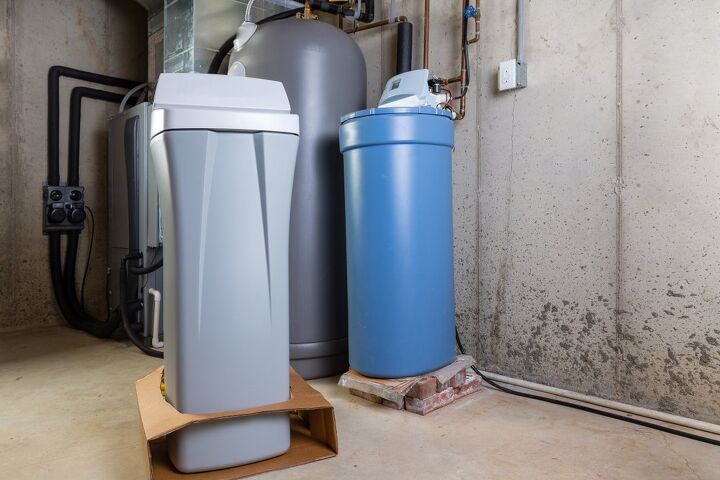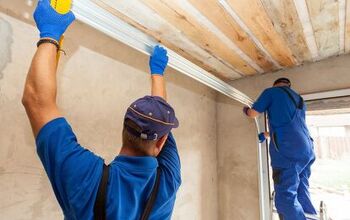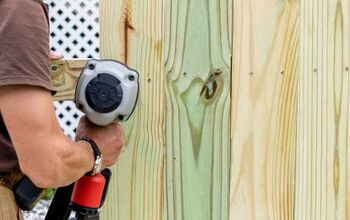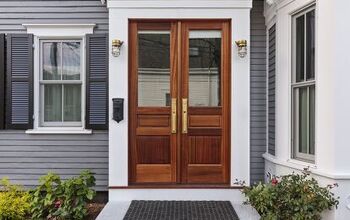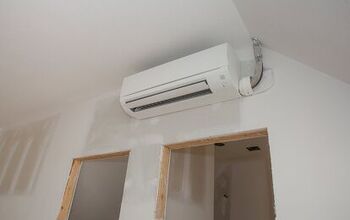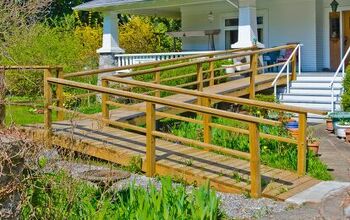Do I Need A Permit For A Water Softener? (Find Out Now!)

Water softeners are safe and effective, and they swap out calcium and magnesium in your water for salt ions. This results in much softer water that can extend the lifespan of your plumbing and appliances. If you’re considering getting a water softener, you might be curious about whether you need a permit to install it.
Depending on your location, you may need a permit and a licensed plumber to install a water softener. Even if you live in an area where you’re permitted to install the water softener yourself, consider hiring a plumber. Improper installation can result in health issues like Crohn’s disease since water softeners are connected to sewer lines.
Need a Water Treatment and Purification System Installed or Replaced?
Get free, zero-commitment quotes from pro contractors near you.

What Is A Water Softener?
A water softener is a type of water filtration system. Its purpose is to remove calcium and magnesium, which are minerals that cause hard water.
As water flows through the water softener, the system filters out the hard water minerals. It typically replaces them with salt ions. The softened water then flows through your plumbing as usual.
Do You Need A Permit To Install A Water Softener?
Whether you need a permit to install a water softener depends on your location. In some cases, you won’t need a permit at all. In others, you’ll need both a permit and a licensed plumber to do the installation for you. And sometimes, you’ll need a permit and inspection, but you’re free to do the installation on your own.
It’s wise to check with your local building department to see if you’ll need a permit before attempting installation. If you’re in a homeowners association, then you’ll need to double-check that your water softener complies with its guidelines.
Does A Licensed Plumber Need To Install A Water Softener?
Depending on your location, you may or may not be required to have a licensed plumber install your water softener. But suppose you live in an area where you’re permitted to install the water softener yourself. In this case, you still may wish to have a licensed plumber take care of the installation for you.
This is because improper water softener installation can be dangerous. Modern water softeners are tied to your sewer line. Because of this, improper installation can expose you to serious illnesses like Crohn’s disease.
History Of Water Softener Codes
When the codes regarding water softener installation were written, the design of the average water softener was much different. At the time, three-valve bypasses were installed after the water meter. Then, the water softener exchange tank was easy to attach later on.
Because of this setup, water softeners ended up being exempt from certain requirements. The exchange tank wasn’t directly connected to sewer or water lines, so there wasn’t much risk involved. The codes haven’t changed since then, even though three-valve bypasses and exchange tanks are no longer the norm.
Why A Licensed Plumber Is Recommended
The information in the codes has become misleading to consumers because today’s water softeners are tied to the sewer line. Because of this, a licensed plumber is always recommended to ensure your water softener is installed according to code.
While you can save money installing your water softener yourself, you could potentially put your health at risk. Is it worth it to save a few hundred dollars if you and your family end up suffering from various health issues? Experts agree that it’s best to hire a licensed plumber to install the water softener so that everything is done correctly.
What Is The Installation Process For A Water Softener?
Whether you hire a professional to install your water softener or decide to do it yourself, here’s an overview of the process.
Step 1: Remove Existing Water Softener
Begin installation by turning off the water supply and opening nearby faucets to relieve water pressure. Turn off the water softener and cut the plumbing, leaving as much piping as possible.
Step 2: Put The New Softener In Place
Clean and prepare the area before moving your new water softener into position. It’s best for it to sit in a clean, level spot with a nearby 110-volt outlet.
Step 3: Insert Rubber Grommet And Drain Elbow
Insert the rubber grommet and drain elbow into the hole in the back of the softener.
Step 4: Install O-Rings
Next, you’ll need to install the o-rings onto the bypass valve. Then, connect it to your unit’s control valve.
Step 5: Push Bypass Valve Into Control Valve
Push the bypass valve inside the control valve of your water softener.
Step 6: Install Retainer Clips
Install the retainer clips, ensuring that all the tabs are fully engaged.
Step 7: Repeat Steps 4, 5, And 6 For Installation Adapters
Install the installation adapters by repeating the last three steps.
Step 8: Connect Overflow Hose To Drain Elbow
The next step is to connect the salt tank’s overflow hose to the drain elbow.
Step 9: Connect The Water Softener To Existing Plumbing
Use flexible connections to connect your new water softener to your existing plumbing system.
Step 10: Turn Water On
Slowly turn the water supply back on, closing all open faucets and checking for leaks. Turn the water heater back on as well. Open the bypass valve slowly to allow water to flow into the water softener.
Step 11: Add Water And Salt To Storage Tank
Depending on the specific water softener you’re installing, you may need to add varying amounts of water. Generally, three gallons is enough to fill the salt storage tank. Then, add salt.
Step 12: Program And Sanitize Water Softener
Follow the instructions in your owner’s manual to program and sanitize your new water softener.
Need a Water Treatment and Purification System Installed or Replaced?
Get free, zero-commitment quotes from pro contractors near you.

Related Questions
Are water softeners worth it?
Generally, experts consider water softeners to be worth the price because they extend the lifetime of your appliances. They also improve their performance, reduce wear and tear, and prevent scale build-up.
Are water softeners bad for your health?
Overall, water softeners are safe. The only concern is for those who need to watch their sodium levels. You can avoid this potential issue by drinking bottled water instead of tap water.
Why do water softeners use salt?
Water softeners use salt for the ion-exchange process. They exchange the hard minerals in the water for sodium ions, making the water softer.
Related Guides

With a lifelong passion for writing plus strong enthusiasm for home improvement and DIY projects, joining the team at Upgraded Home was an easy choice. Jessica Allen likes to share helpful information with current and aspiring homeowners. Aside from writing, Jessica loves doing yoga, playing the piano, and dabbling in graphic design.
More by Jessica Allen



